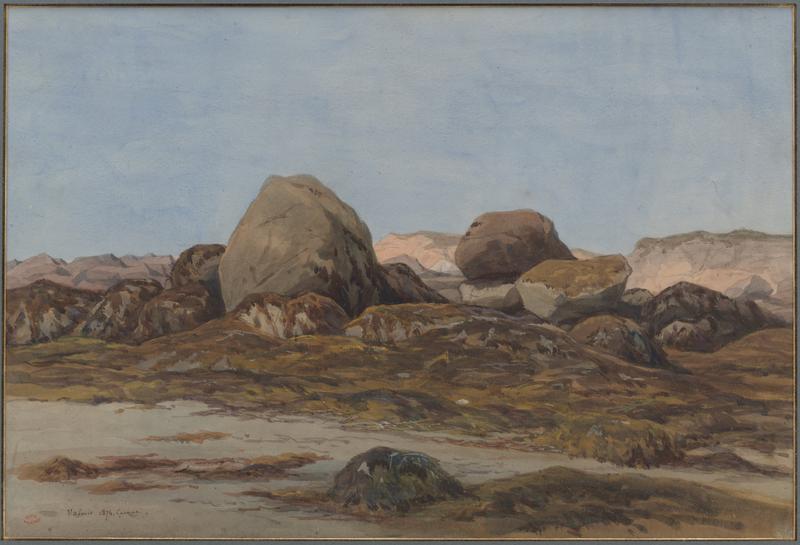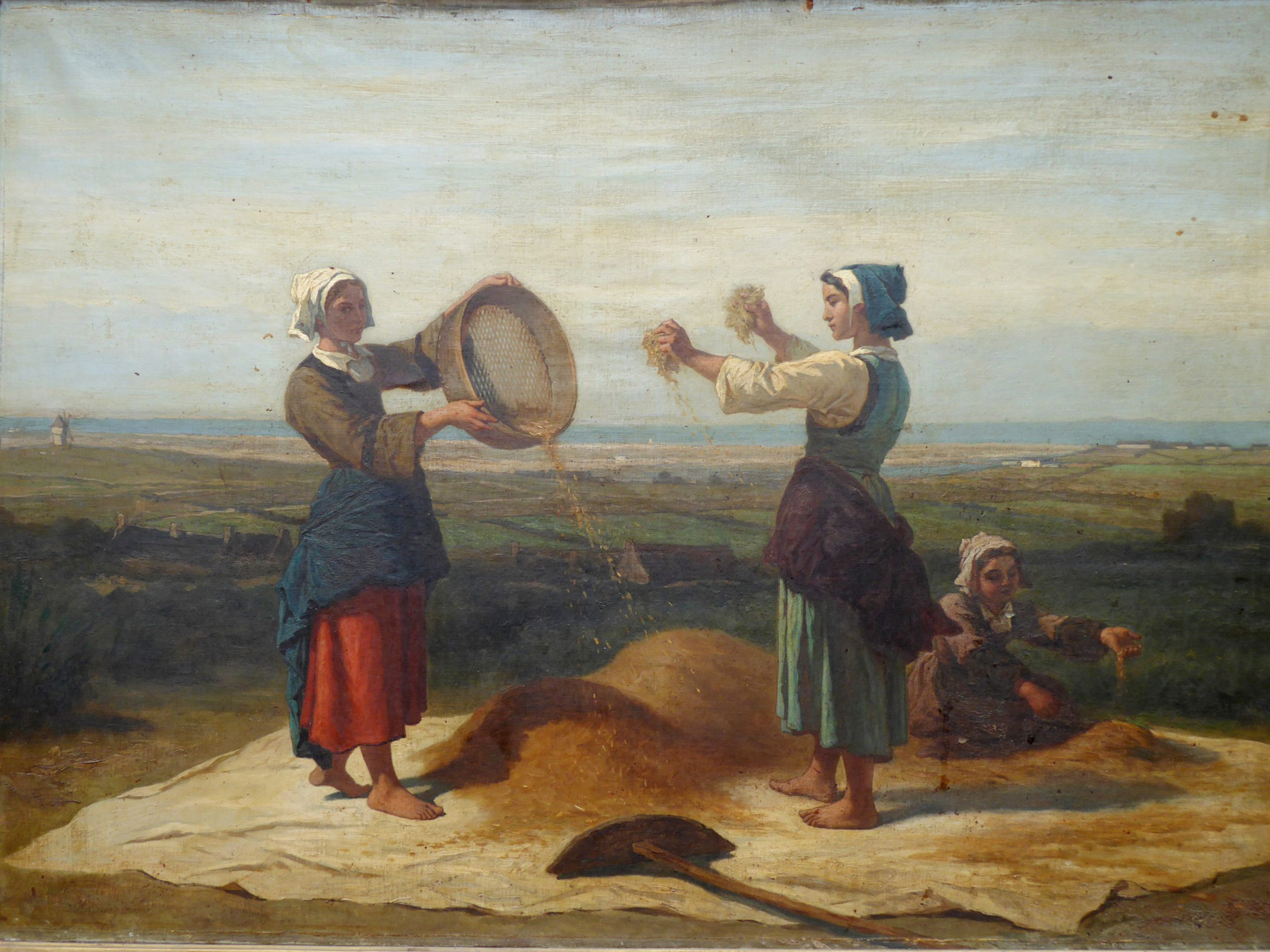
181. Théodore Valério, Landscape at Carnac
| Artist | Théodore Valério, French, Herserange, Meurthe-et-Moselle 1819–Vichy 1879 |
| Title, Date | Landscape at Carnac, 1874 |
| Medium | Watercolor |
| Dimensions | 13 3/8 × 17 15/16 in. (34 × 45.5 cm) |
| Inscriptions + Marks | Lower left: Valerio 1874 Carnac |
| Provenance | [Galerie Jacques Fischer, Paris, until 2009; to Weisberg]; Yvonne and Gabriel Weisberg, Minneapolis |
| Exhibition History | "Reflections on Reality: Drawings and Paintings from the Weisberg Collection," Mia, 2022–23 |
| Credit Line | Promised gift of Gabriel P. and Yvonne M.L. Weisberg, Minneapolis |
Théodore Valério settled in Brittany toward the end of his life. Among its delights was Carnac, on the peninsula’s southern coast, a town famously studded with dramatic prehistoric standing stones, erected in the Neolithic period. Some estimates put them at 7,000 years old. The function of the stones is a matter of debate, but proposals include tomb monuments, astronomical markers, and defensive emplacements. During the nineteenth century, many saw such monuments as mysterious, mystical, and worthy of veneration. Some stones are arranged in rows, but others, as in this watercolor, exist singly or in small groups. Despite being known for his ethnographic studies, Valério gave us little sense of the scale of the stones, which can range from knee-high to more than twelve feet.

A student of artist Nicolas-Toussaint Charlet (cat. no. 52), Valério suggested a mood here both romantic and realist. Some realists documented aspects of rural life that were disappearing, and that may well have been Valério’s motivation with this landscape: in his day the Scottish antiquarian James Miln de Woodhill (1819–1881) reported that only a quarter of the stones remained standing. Valério also recorded Carnac traditions, as in his painting of grain winnowers (fig. 1), acquired for the Musée de Préhistoire in Carnac in 2017.1
GPW
Notes
“Une nouvelle oeuvre exposée au Musée de Carnac,” Le Télégramme, September 16, 2020. ↩︎